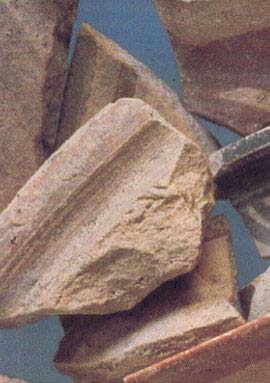Image Details

Ilan Sztulman/Tel Mique-Ekron Excavation Project
Delicately painted sherds, a mere fraction of the thousands recovered so far, testify to the vibrant culture that once flourished at Tel Miqne. Excavators have now identified the site on Israel’s inner coastal plain as Biblical Ekron. The style of pottery—called Mycenaean IIIC:1b—is not Canaanite (as might be expected from Ekron’s geographic location) but distinctively Aegean, with decorations of spirals, bands and zigzags. Fish and bird decorations appear as well. Neutron activation analysis of this pottery from strata VII and VI has confirmed that it was locally made and not imported from Aegean lands. Authors Trude Dothan and Seymour Gitlin conclude that the inhabitants of Ekron were part of the great migration of settlers from the Aegean known as the Sea Peoples, a group that included the Philistines. The Sea Peoples brought with them Mycenaean pottery forms and decorations radically different from the local Canaanite ware.
